(With updates 5-10-01 and 10-21-17.) After my visit to Peru in 1988, I decided I wanted to return, this time with a visit to Brazil, and this time with my brother, Jim. Observations on an Adventure to Amazonas. The road back home |
(With updates 5-10-01 and 10-21-17.) After my visit to Peru in 1988, I decided I wanted to return, this time with a visit to Brazil, and this time with my brother, Jim. Observations on an Adventure to Amazonas. The road back home |
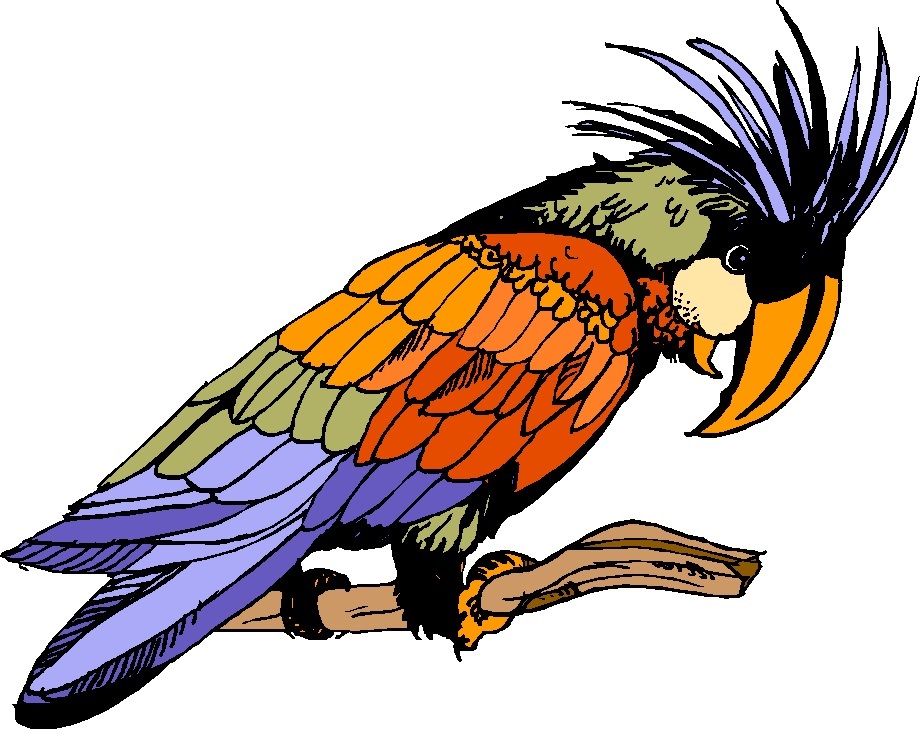 Thursday, April 19, 2001. At 9:30 a.m. I was sitting in our room (#3332; over 200 yards from the front desk!) at the Tropical Manaus Hotel. The flight from Miami left a little after 10 p.m. on the 18th and arrived at the Manaus Airport a little after 3 a.m. local time, which, at this time of the year, is coincident with U.S. Eastern Daylight Savings time. There were only about 50 to 60 people who deplaned from the Boeing 767 at Manaus. The others continued on to Belem at the mouth of the Amazon. Customs was lengthy and tedious: a single agent took our customs forms, looked at them, stamped some, and passed one form and accompanying passport to an assistant who appeared to be looking up records in a book or entering information into a computer terminal. After we gathered up our luggage, we had another line to deal with as another single agent funneled each bag through an X-ray-like machine, a procedure that appeared rather redundant as each item had been scanned prior to boarding the plane in Miami. Emerging from the inspection, we immediately ran into our contact and were then quickly whisked away in his car. In ten minutes or so we were checking in at the front desk of the Tropical Manaus Hotel. It was about 4:15 a.m. We plunged into our beds, but were not able to drift off to sleep quickly as the excitement level was pretty high. Jim made the transition first and his snoring seemed to rattle the window panes. This morning he had a similar criticism of my own sleeping noises. Breakfast was not served beyond 10 a.m. so we had a 9 a.m. wake-up call. The shower was grand, with a shower head as big as a sunflower and a marvelously abundant flow. It's nice to know that some governments still allow people to have as much water as they want. The breakfast buffet was fairly extensive, but without any strange or unusual food items. The driver on the way to the hotel told us we should have no concerns about any of the foods served here. It's a five-star hotel! Both Jim and I had scrambled eggs, sliced chicken hot dogs, a deep-fried ravioli-like pastry item, some rolls, and OJ. Afterward, we went for a walk around the hotel grounds. First, of course, was a visit to the edge of the Negro River. The front of the hotel faces the river and is only fifty yards of so from the water's edge. The river appeared to be a mile wide, maybe two, at this point. Adjacent to the hotel is a little zoo; quite nice. We spent 45 minutes strolling through the "forest" observing the caged animals, which included jaguars, several kinds of monkeys, a variety of birds, ocelot, capybara, peccary, caiman, and a couple of others. Soon thereafter it was time for lunch and the buffet was splendid: beef, chicken, fish, hearts of palm salad, radish salad, cauliflower salad, maybe a half-dozen more salads, three rice dishes, mashed peas, . . . And after filling two plates full, there were numerous unique and tasty desserts from which to choose. During the early-morning transfer from the airport to the Tropical, we had made arrangements with our driver to take a city tour at 2 p.m. Shortly after the appointed hour, "Eddy" appeared and herded the two of us into a waiting van. With the driver apparently attempting to achieve maximum speed on the drive into the downtown section of Manaus, Eddy began his presentation. 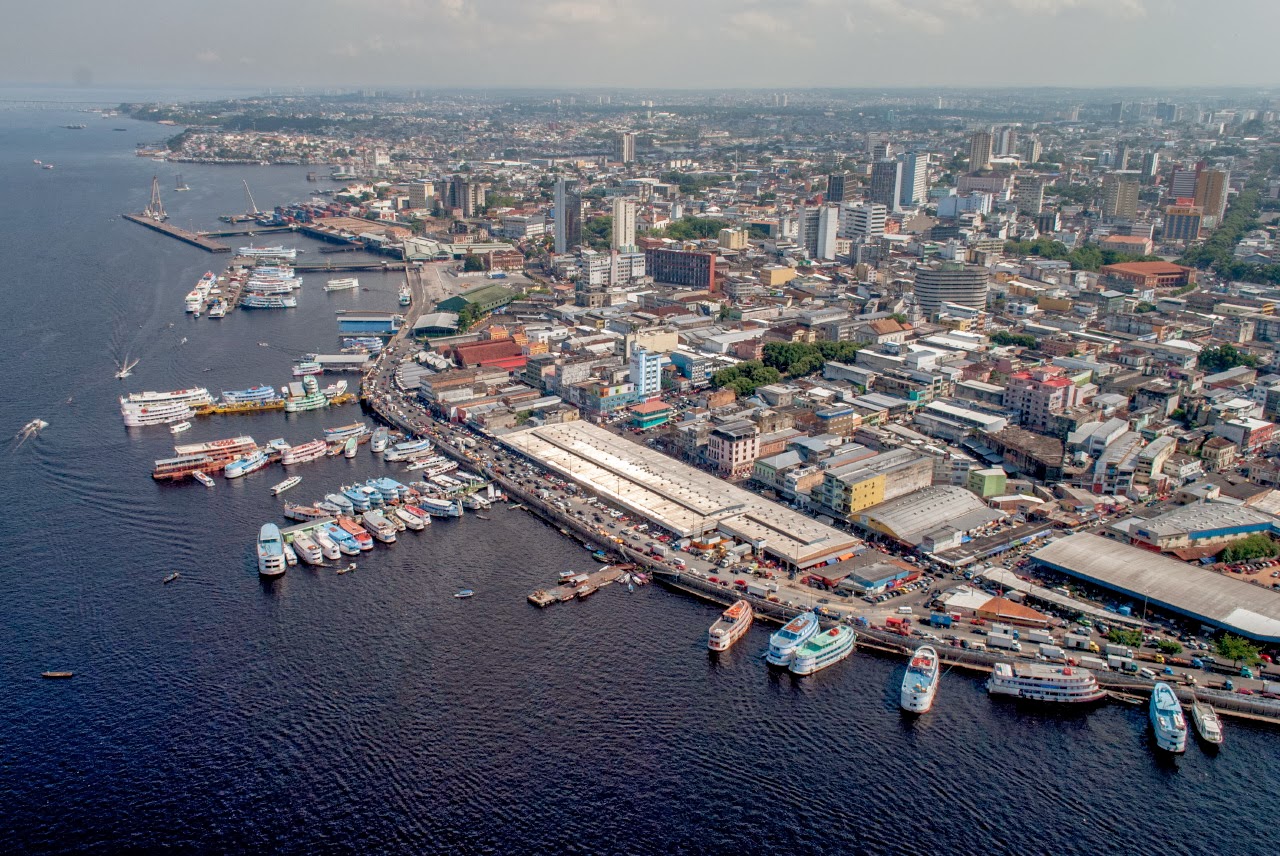 There were only two problems: First, Eddy's command of the English language left Jim and me on too many occasions totally confused. Second, in Eddy's determination to answer all our questions, he sometimes improvised with little details . . . like facts. For example, Eddy said the Tropical Hotel was only 15 years old. Jim and I had a hunch it was older than that, so we inquired at the concierge desk. The hotel was 26 years old. Our early suspicions of Eddy's accuracy and his difficulty with English dulled considerably the value of his running commentary. He also had the bothersome habit of saying "no" when he really meant, as far as we could discern, "yes." The first stop on our three-hour tour was the famous Manaus Opera House. Completed in 1896, this is a landmark the city highlights with justifiable pride. Almost all of the major construction materials -- marble, wood, even the auditorium chairs -- were imported from around the world: Italy, India, France. But that's Eddy's story; who knows if it's really true. Eddy then led us across the street (street name: Tapajos) to a little plaza where the Brazil army band was performing . . . rather poorly I'd have to say, thence directly into a souvenir shop. Disappointingly for Eddy, I'm sure, and the shopkeeper as well, we bought only post cards -- but ten of them. Back in the van, we made our way as fast as our driver dared -- once missing a collision by just inches -- to the Cathedral N.S. de Conceicao, a catholic church which, if I got the proper story from Eddy, is distinguished because it predates the opera house and because a church at that location burned down, was rebuilt, was burned down again, and again rebuilt. Next stop was the Customs House, which was constructed in England, then disassembled, transported to Manaus, reconstructed on its present site, and inaugurated in 1906. In the courtyard we watched bare-breasted native women and lightly-clad native men with primitive wind instruments dance native dances. Eddy was a little upset I wasn't taking any pictures of these many attractions. I was saving my picture-taking for the river and jungle. From there we pressed on to the municipal market (patterned after the no-longer-standing Les Halles market in Paris, Eddy proudly announced) where all sorts of food items were sold (very interesting) in addition to more souvenirs. Then we were whisked away in the van back to the hotel, arriving there at 5 o'clock right on the button. Jim and I were a little too tired to attend the "Amazonian Theme Night" program out by one of the pools, so we missed a lavish buffet, folk tales, dancing, and other festivities of the evening. Instead we shared a club sandwich, some French fires, and a couple of drinks of pineapple juice at the hotel snack bar, and returned to the room to hit the hay about 9:00!  Friday, April 20, 2001. Apparently we needed the sleep; we slept in to 8:15! After showers we headed to breakfast, then for a walk around the grounds: the "orchidary", jungle path, wire-suspended (swinging) bridge, and along the Negro River. It was a pleasant walk; warm but not hot, humid, but no rain. Although I had expected rain for some period every day, there hadn't been any rain yet. Back at the room at 11:55, we discovered check-out time was earlier than expected: noon. A call to the front desk extended it to 12:30. After checking out, we spent some time writing postcards, then it was lunch (ham and cheese sandwich, French fires, and OJ) and a little before 2:15 p.m. someone with a T-shirt emblazoned with a picture of the Santana III on it walked up to me and asked if I was "Mr. Fred." It was time to board the yacht and head east on the Negro River. 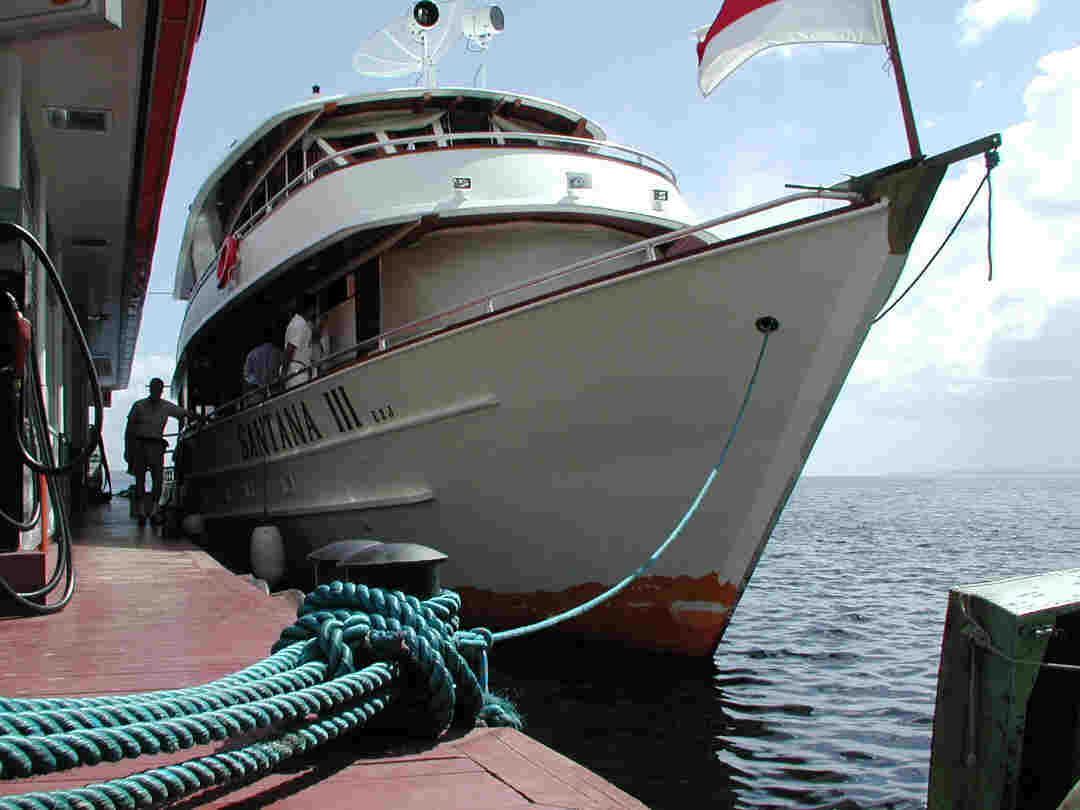 The yacht was utterly fantastic! It was quite new (looked brand new), slept 16, and had a dining room, general meeting room, an aft deck with white leather easy chairs(!), a top deck with a great view all around, and it towed two aluminum boats with outboard motors. The brochures called them canoes. They didn't look like canoes to me. Since there were only six passengers (excluding the crew) on this trip, Jim and I were issued separate cabins! Each had an adjoining bathroom with toilet, sink, and shower. Both were air conditioned and contained bunk beds; a narrow single on the bottom and an even narrower single on top. We pushed off from the dock about 2:30. The weather was ideal: bright sun, some big, white, puffy clouds, and a pleasant breeze. 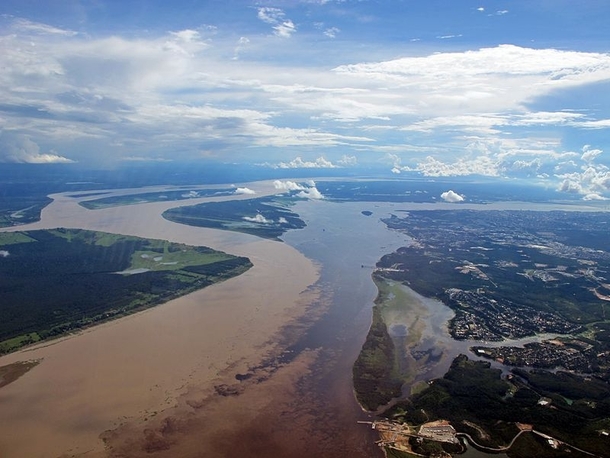 We cruised along past the city of Manaus, past some cargo-carrier ships anchored in the river, and past a variety of other water craft. After a couple of hours, we reached the confluence of the Negro and Amazon Rivers. The Negro had black water (attributable to an abundance of decayed matter) and was quite acidic. This is good, because the pH (4.5 we were told later) is too low to support mosquitoes and a bunch of other bothersome bugs! The Amazon is brown in color, sort of like coffee with cream, and has a neutral pH. Where the two rivers meet there is a distinct line of demarcation. We cruised back and forth a couple of times and I took video pictures. The temperatures of the rivers also differ. The Negro is so much warmer than the Amazon (eight degrees a guide told us later), the yacht had to slow down when it crossed the line so the shock to the water-cooled engine wouldn't be too great. After doing the confluence "thing" for a while we turned around and traveled west for maybe 45 minutes or so, then turned south and pulled in and docked at a floating restaurant, which, just by chance, had an adjacent souvenir shop, also floating. We stopped only long enough to ready the two aluminum boats for an excursion deeper into the jungle. When we stopped to examine some gigantic lily pads, a little girl in a dug-out canoe came paddling toward us at top speed. When she reached our boats she held up her prize and presumably the purpose of her paddling: a small, maybe-16-inch, live caiman, which was tied with string so it couldn't bite. She displayed it not only with pride but also apparent expectation. I guess she anticipated a reward from the tourists. None was forthcoming, but our guide, Juscelino, slipped her a one Brazilian "real" bill (worth about 50 cents, U.S.) just before we restarted our engines and sped off. 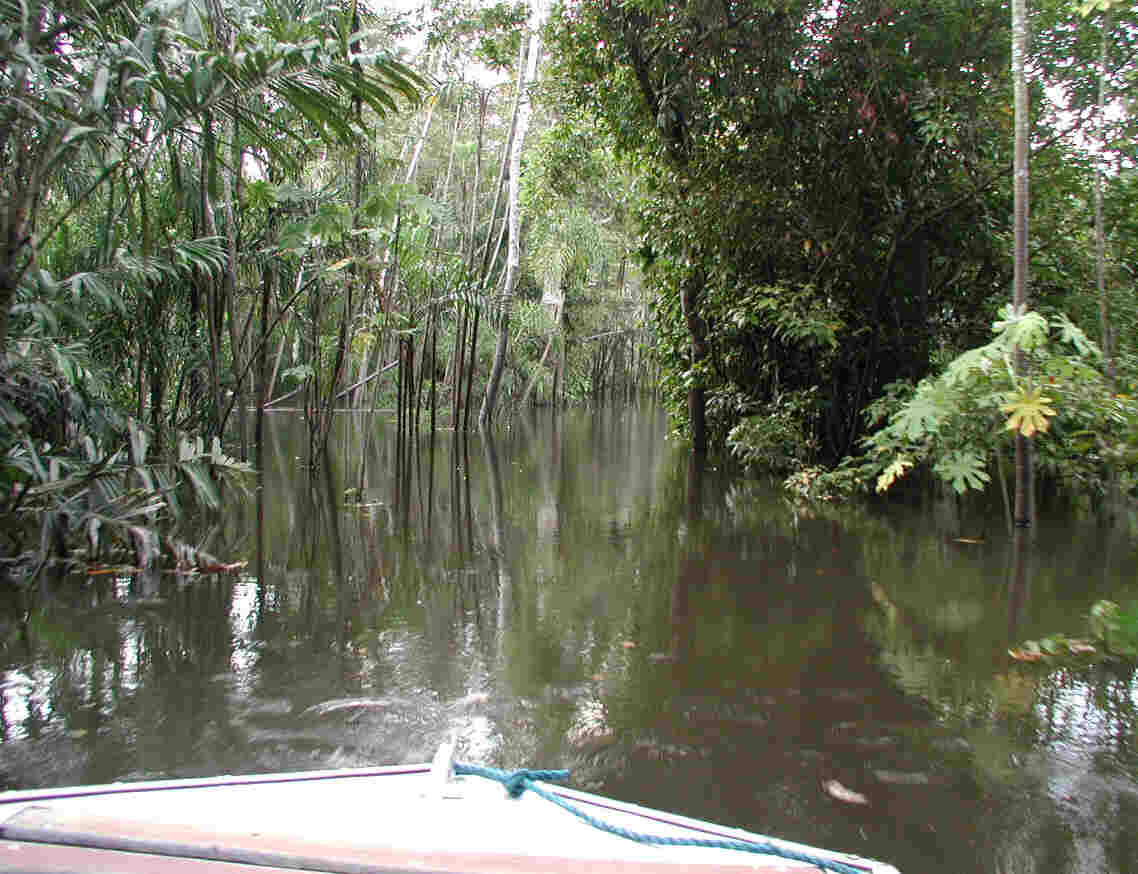 After five or ten minutes more, our boats slowed and then were headed directly into the thick of the jungle. During the dry season this is impossible, but during the wet season the waters rise up and cover much of the jungle floor. These areas are called "igapo". The waters at this time of year were about 20 feet above the level at the end of the dry season. Consequently, in our boats, we were drifting 20 feet "up" in the trees. But we were by no means anywhere near the tops, which loomed sometimes 30, 40, maybe 50 feet above us. It was a magical feeling. Under the lighting conditions at that time of day (late afternoon), the surface of the water was quite reflective and it appeared as if the trees and jungle vines extended just as far below us as they raised up above us into the sky. It seemed we were "floating" in the middle of nothingness, in a world where up and down were absolutely identical. It was another realm, another dimension, another world. It was truly a magical sensation. We saw a number of birds, several monkeys, and all sorts of commotion in the water from piranha. Apparently the propellers frightened the fish and they would swim up to, or break, the surface and it looked like the water was boiling. At one point, our guide spotted a tree bearing inga fruit, a rare, not-commercially-available fruit, which, he said, had a most unique flavor and texture. The man at the outboard motor maneuvered our boat into the branches of the tree and our guide climbed partially up into the tree to fetch this rare fruit for us to sample. The passengers in the other boat just watched. Apparently our guide didn't notice that a branch he reached for wasn't a branch at all; it was an immense ant nest, and when he grabbed at it, the thing exploded like a hand grenade. Not knowing what was happening, I thought a branch had fallen and grazed my back, but when I looked again, there were ants everywhere, thousands of ants, tens of thousands of black ants, each about three-eights of an inch long. A large chunk of their tree-based colony had crashed down on me. No sooner were there ants everywhere than I heard our guide say reassuringly, "Don't worry, they won't bite." No sooner did he say "Don't worry, they won't bite," than they were biting. Ouch! Ouch, ouch! Jim and I used the word many times. The ants were all over the boat, they were all over our clothes, all over our bodies, they were racing all around my cameras. They were crawling all over our faces and in our ears and hair. Fortunately, a dock was nearby, maybe only 25 yards away. The outboard motorman quickly maneuvered the boat to the dock and our guide, another tourist, Jim, and I leaped onto it. The guide kept reassuring us, "Don't worry, they won't bite." It was almost as if a cue for them to bite. So there was a little performance we put on: the guide was alternatively swatting us with his shirt or picking off individual bugs, and reassuring us, "Don't worry, they won't bite." Jim and I were jumping around alternately brushing off ants or stomping on them on the dock, and issuing outbursts of "ouch!" It seems the dock to which we had fled for "de-anting" was the dock of a native whose house (shack) was immediately adjacent -- I mean directly attached to the floating dock. So as we "de-anted," we simultaneously "anted" this poor man's dock and forthwith his house. He hastily retrieved a broom and joined our little dance. It must have been at least a ten-minute act, which the inhabitants of the other aluminum boat thoroughly enjoyed. They were so entertained they shouted their approval. It was as if they wanted an encore. When the bulk of the ants had been dispatched into the water, onto the dock, or into the poor man's home, we reboarded the boat for the trip back to the Santana III. Though the bulk had been routed, there were still hundreds (thousands?) that continued to scurry about the boat and crawl all over the occupants. We must have looked like a family of baboons. Our guide was "grooming" us all the way to the yacht and when we were back aboard, we found another dozen or so ants that had eluded earlier searches. During this whole "ordeal" I was torn between swatting ants and taking pictures. Here was a once-in-a-lifetime photo op, but I was hopping around with ants in my pants. Once or twice I managed to get my video camera going, but I'm sure the pictures will be nothing but mass confusion. Dinner consisted of several serving platters or bowls with chicken, hearts of palm salad, rice, a fish stew (made with the tambaqui fish -- very good, Jim reported), and some sauces and seasonings. A custard was dessert. As the Santana III speedily cruised west on the Negro River (we lost quite a bit of time with the ant incident), most of the passengers gathered on an aft deck to enjoy the cool breeze, the pleasant night air, and to replay in their minds the highlights of the day's events. We were warned that we would receive a wake-up call Saturday morning at 5 a.m. The plan: to take a sunrise tour before breakfast.  Saturday, April 21, 2001. It wasn't a particularly restful night for me. Even though Jim had a separate cabin, it was still a little cramped. Cabin space was about six feet by six feet (not counting the bathroom). The bed had a mattress, pillow, and comforter, but that was it. The air conditioning controls were right at the head of the bed and whenever the blower went on, a red light illuminated about six inches from my nose. The unit's loud noise was a little disconcerting, too. Moreover, when it cooled down, I needed the comforter, but when it warmed up I didn't. I dreamed pirates had boarded the yacht and were holding some of the passengers hostage. (Really!) When I got the wake-up call I was told we'd be leaving in five minutes. I threw on some clothes, grabbed my cameras, and raced to the stern of the yacht. There I was given a glass of juice, not orange; it was a unique Brazilian fruit. Quite tasty. It seemed to be after sunrise when our sunrise tour began (actually it was about 5:45) in the aluminum boats. We buzzed our way across large open water sections then turned off onto smaller, then still smaller channels and soon were in the igapo, in the same kind of magic world we had experienced the night before. Again the perfectly still water in front of us became a mirror and everything that emerged above it appeared to be copied below. It was surreal. Jim and I were in the front of our boat, Juscelino and another tourist were seated behind us, and the motorman was in the stern. The other boat followed us, so we had the best seats for the sights. Passengers in the other boat never witnessed the mirror effect because they were always in our wake. 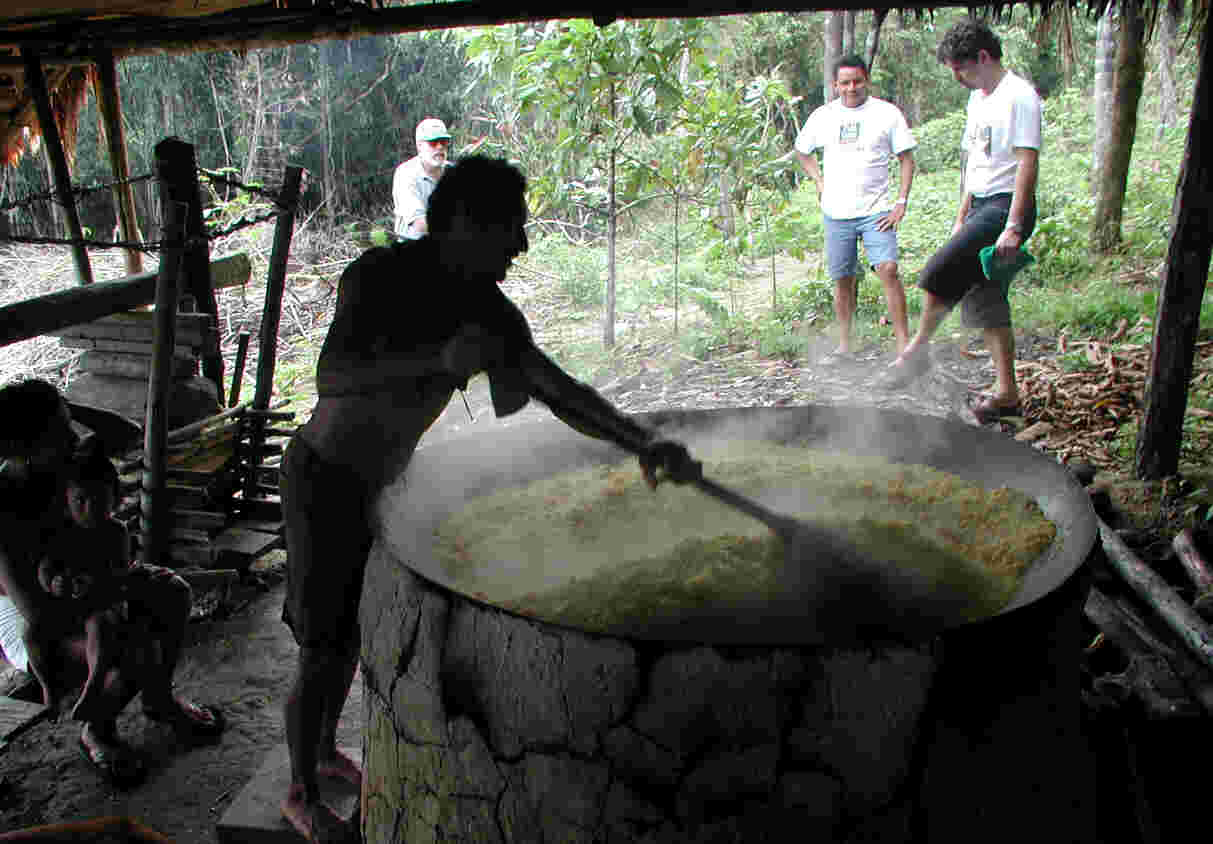 We were back at the yacht at about 7:45. Then came breakfast (very tasty), and at about 8:30 we started off again in the aluminum boats. The first stop was a flour "factory," where a man was stirring a huge wok-like bowl of yellow flour (it's called "ksava" flour) as it was cooking over an open fire. Ksava is produced from a plant which is grated, soaked in water, squeezed dry, then cooked for four hours. If not prepared in this way, it can be poisonous to eat. It was served at almost all of our lunches and dinners and was quite good. It was great as a means of sopping up gravy or mixing with other sauces and such. There were more picture opportunities at the "factory" than time allowed. Back in the boats we rode only a few minutes before stopping for a visit to an Indian community. It was interesting to see their houses and get a little sense of their lifestyle. At 9:00 a.m. we pressed on in the boats once again, finally disembarking for a walk in the jungle. A local resident was along with us this time to identify jungle plants and explain their uses or medical values. He spoke only Brazilian, so Juscelino translated for Jim and me. The jungle is a jumble of leaves and other litter in addition to trees, vines, ferns, mosses, and other plant life. It's also muddy. Juscelino told us that the numerous shiny mounds of "dirt" we saw were actually the waste products of South American earth worms that grow to a length of two feet or more in the jungle. We saw a few birds and some bugs and spiders, but no monkeys, or other "substantial" animals. I asked Juscelino if we might encounter any snakes. We didn't. When we got back to the Santana III our boots were caked with thick gooey mud so we took them off and left them at the stern of the boat. We were all soaked in sweat after our two-and-a-half hour trek in the jungle, so we headed for showers. Apparently toilet, sink, and shower water was taken directly from the river; I assumed it was not filtered or treated. It had a slight yellow-brown coloration. It was also unheated, but not uncomfortably cool. Surprisingly, it wasn't very warm. Lunch followed immediately after the showers: rice, noodles, a slaw-like salad, river fish (surprisingly good), two pots of stew to choose from, and a ksava dish. Also: a spicy (hot, hot!) sauce. Coke became my choice for drink. Other options include bottled water, beer, and one or two other choices, the identification of which I never determined. As our yacht was heading to its next destination -- a spot with a reputation for good piranha fishing -- we noticed a wall of rain ahead. Then we met the wall. It poured. It was an absolute downpour; not at all the brief shower we had been told to expect. After maybe 30 minutes of torrential rain I remembered: Jim and I had left our boots at the stern of the yacht -- fully exposed to the elements. During a good portion of the storm, Jim and I staked ourselves out on comfortable white-leather-upholstered sofas in the general meeting room and found a nap to be the best of all available options under the circumstances. Because of the storm, the piranha fishing expedition planned for the afternoon was canceled, but as a consolation, we were invited to take a "reconnaissance tour" in the aluminum boats. Juscelino announced that the rainstorm was over and would not resume, so we joined the tour. I decided to wear my moccasins instead of my boots, just in case the "weather report" was in error. About 15 minutes into the tour, a light rain began, followed by a heavier rain. I had my video camera with me but had the good fortune of taking along a plastic bag. By the time we returned to the Santana III Jim and I were drenched. The light jackets we wore minimized the soaking to some degree, but my moccasins were absolutely waterlogged. Back on board the yacht, we discovered our boots not only had been rescued from the earlier rain but completely cleaned of accumulated mud. What a nice touch -- and a great relief! Soon, dinner was served: beef, chicken, rice, carrots/potatoes, and an ice-cream-like dessert made from some kind of Brazilian fruit. During the meal Juscelino and one of the other Santana crew members appeared, each carrying a live, 20-to-24-inch caiman they had just caught. The tail of one was half missing, the likely result of a piranha encounter, we were told. After we examined the "catch" the two caiman were released back into the water. After dinner, alligator spotting was scheduled, and Juscelino assured us the rain had stopped and would not resume. I suspect Jim was by then a little dubious of Juscelino's weather-forecasting talents, and he declined the invitation. He also just recovered from a bug-in-the-face and a bug-in-the-mouth incident, so opted for the sanctity of the general meeting room. I decided to participate in the alligator spotting, but left my cameras in the cabin. As we started out Juscelino said the staff hoped to capture a three- or four-foot specimen. Frankly, I hoped they didn't. I could just imagine the thing getting loose in the boat and biting everybody. We were told two red spots reflected in the bright beam from a hand-held searchlight indicated a caiman. Two white lights indicated either a snake or bird. However, two white spots at water level indicated an old, hence large, caiman. We saw several alligators, several birds, a single frog, and one snake we were told was among the most venomous in South America. We also saw lots of bats. They flew in and out of the searchlight's beam as it scanned the darkness. On a couple of occasions, we saw some white spots at water level. They were caimans, maybe four or five feet long, and happily they darted off out of sight when we drew near. Toward the end of the alligator-spotting trip, the guide saw a couple of red spots. The boat was navigated into position, the guide leaned over the bow, then lunged for the creature and caught it, gripping the reptile firmly around the neck with one hand and tail with the other. When he turned around to show us his catch, low and behold, it's tail was half missing! It was the very same caiman Juscelino had shown us in the dining room not more than 45 minutes before. Clearly, it had to be the most stupid caiman in Brazil. After we returned to the Santana III, Juscelino said the following day's wake-up call would be at 6 a.m. I made entries in my journal and then headed for my cabin at 11 o'clock. I was the last one on the boat to go to bed.  Sunday, April 22, 2001. Last night was a disappointment. I was pretty much acclimated to the red light and the sound of the air conditioner going on and off, but periodically through the night I awoke to a sore throat and an occasional runny nose -- sure signs of a garden-variety cold. I was alerted to its potential a day or so ago, but assumed my treatment with Ester C (vitamin C) had dispatched it. Not so, it seemed. But a cold symptom or two weren't going to interfere with my Amazon adventure. I decided not to tell Jim, as announcing it would only give the thing further credence. 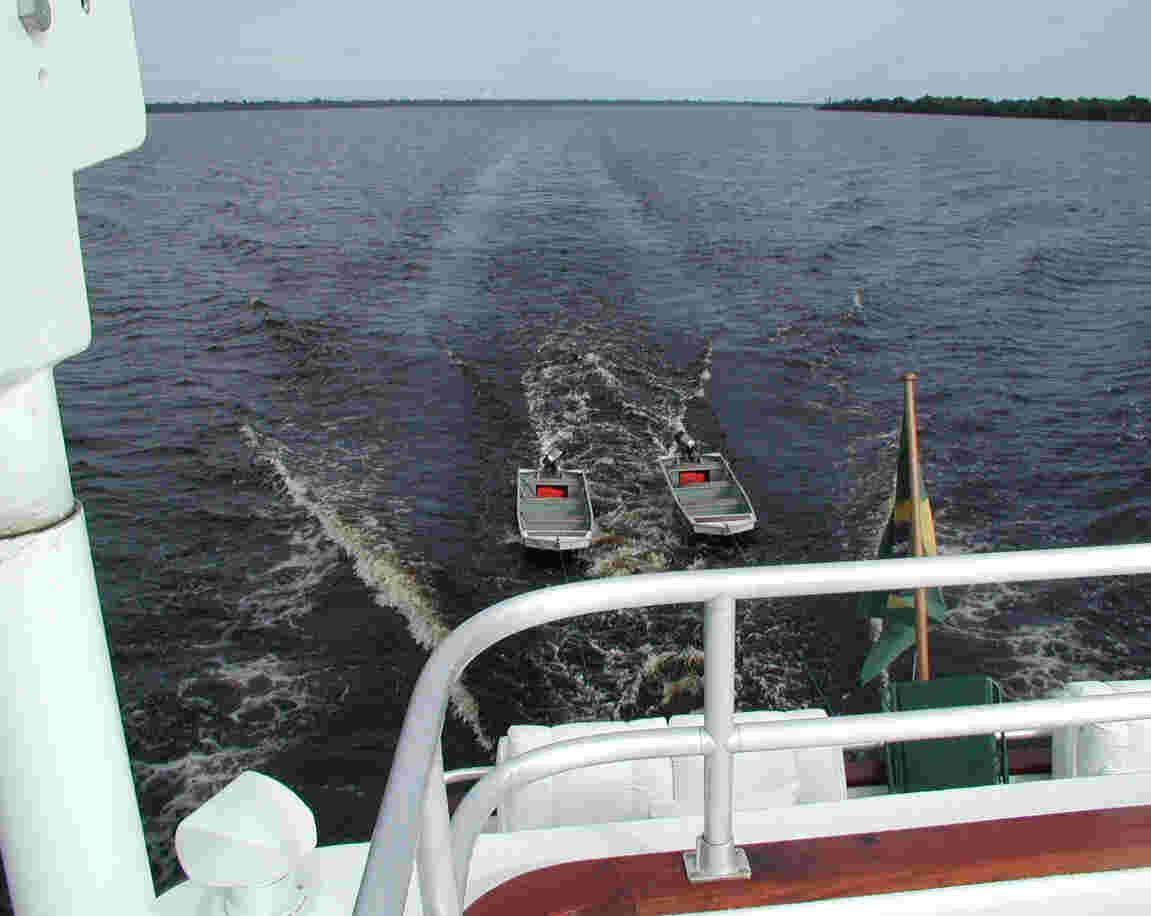 The wake-up call was in the neighborhood of 6:30. We gathered for breakfast and then at about 7:30 the Santana III set out for our next destination: a beach with swimming opportunities about three hours away. We enjoyed very much watching the sights as we cruised along the Negro River's 400-island archipelago. There was a very narrow channel that led from the Negro River into a lagoon behind the beach, and our skipper artfully glided the Santana III through it. We tied up just inside the channel with our yacht hugging the sand beach shore. We were given two hours to walk the beach, swim, or just sit in the sun. Jim and I chose the first two. By aluminum boat we were delivered to the other side of the channel and we strolled along the Negro River as far as we could, only three or four hundred yards I suppose (obstacles blocked access beyond that). Then we retraced our steps. I was bound and determined to swim the short distance from the beach back to the Santana III. And I did! The only difficulty encountered was there were no steps from the water level up onto the Santana III deck. I struggled unsuccessfully a couple of times and then one of the staff members came to my rescue. He hauled me in like I was a big tabaqui fish. It was embarrassing! Jim simply swam back to the shore from the boat and was picked up in one of the aluminum boats. It was very dignified and proper. Juscelino then suggested that the three of us take a spin around the tributary in one of the aluminum boats. In my enthusiasm I agreed, ignoring completely that I had been in the sun quite enough for the day. The ride was maybe 20 minutes, but it was 20 minutes I should have been in the shade. By the time the yacht was back at the dock in front of the Tropical Hotel, my face could have been used for a stop light. We checked back into the Tropical Hotel and were assigned room #2121, a relatively few paces from the front desk and coffee shop. Jim and I were both showing signs of wear as a result of our cruise, so we got an early supper (actually arriving a few minutes before the restaurant officially opened) and then went back to our room. After having experienced the Santana III's shower limitations, we both enjoyed long, lavish showers before bed. Also, it was necessary to dry out our bathing suits and other moist (or wet) clothing. The Tropical doesn't make available clothes washers or driers for their clientele, so we tried to make do with the hefty hair dryer installed in the bathroom. We must have run up a terrible bill with the unit on high. I probably spent the better part of an hour hand-drying my bathing suit, T-shirt, and moccasins. I never did get the moccasins completely dry. But that didn't stop Jim and me from getting to bed by 8:30!  Monday, April 23, 2001. Nine hours of glorious sleep! It was wonderful! No chills, which had threatened, no headache, and the runny nose and sore throat were much better. What a relief. I had visions of fever striking, stomach problems, and feeling absolutely debilitated. Instead, I felt great! There were still minor remnants of a cold -- somewhat stuffy head, tight throat, not-quite-normal voice, but I felt ten times better than I expected to feel. Thanks, Ester. 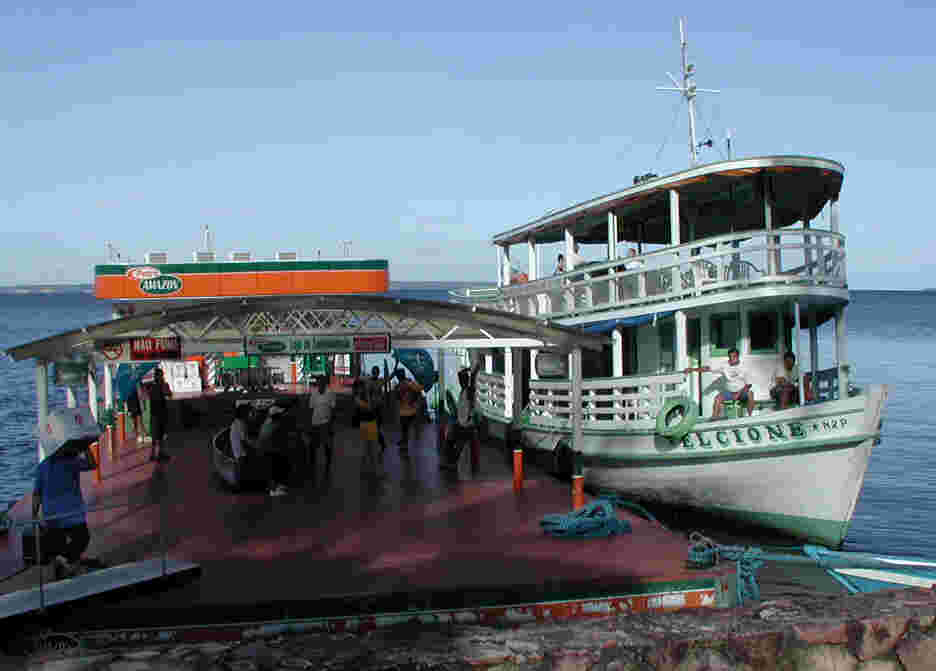 Our wake-up call awakened us before 6:30. We were in the coffee shop at 7:00 and had checked out by 7:55. Immediately we were greeted by Ariau Towers representatives who took our bags and led us back to the dock and aboard a white and putrid-green, two-deck ferry boat for the two-hour, ten-minute trip to Ariau Towers. Along the way, we spotted the beach where we had stopped the day before. After checking in at the Towers reception desk, we were assigned room #4105. When the door of the room was opened, however, we saw but a single double bed. Nope! We switched to #4104, which had two small beds in a similarly-sized tiny room shaped like a piece of pie. All the rooms were pieces of pie with the narrow angle facing the inside of the round building. There were three or four floors of such pie pieces. At the other end of each room, away from the entry, were two other doors; one to a tiny bathroom (with shower), and the other to a tiny little porch about four by six feet, screened in entirely with chicken wire or a near substitute. The screening was to keep out monkeys, not bugs. At 11:30, we reported -- as instructed -to the reception area and were led on a brief tour of the property. Ariau Towers is a maze of wooden walkways, sort of like catwalks, built on high posts or stilts connecting all the buildings -- almost all of which were round -- also built on high stilts. Constructed above an igapo, it looked like a miniature scaffold city perched (during much of the year) over the waters of the Negro River. The construction is very primitive. It looks like it was built by a crew of drunken carpenters. Vertical supports frequently aren't vertical, pieces of lumber stick out at all sorts of funny angles, roofs are wrinkled sheets of steel. It looks very temporary, but is, in fact, permanent. A guide led us through a portion of the maze and pointed out, among other things, the main building (reception, restaurant, auditorium), a couple of swimming pools (on decks also on stilts), some souvenir shops, a UFO pad (really, built especially for UFO landings -- none so far), and "The Pyramid," which, about 20 feet square and 20 feet high, was constructed of a metal frame and plastic, insulated, semi-transparent panels, and serves as a sort of meditation room. Our guide led us into the air-conditioned pyramid (we had to take our shoes off first) and suggested we all lie on individual rugs and pillows placed on the floor along the outside edges of the building. He said we might derive great peace and comfort with ten minutes of so of meditation. Well, I would have no part of this "ceremony." As the lone hold-out, I remained standing, until I became restless and went back outside and put my shoes back on. In the center of the pyramid was a stack of square, glass panels of diminishing size forming another pyramid, and this "innovative" decoration was repeated at the top of the building, which, by the way, was covered with ivy -- fake ivy, I believe. Placed at strategic locations inside were lots of crystals glued onto twisted wire. How charming. How . . . well, I won't say. 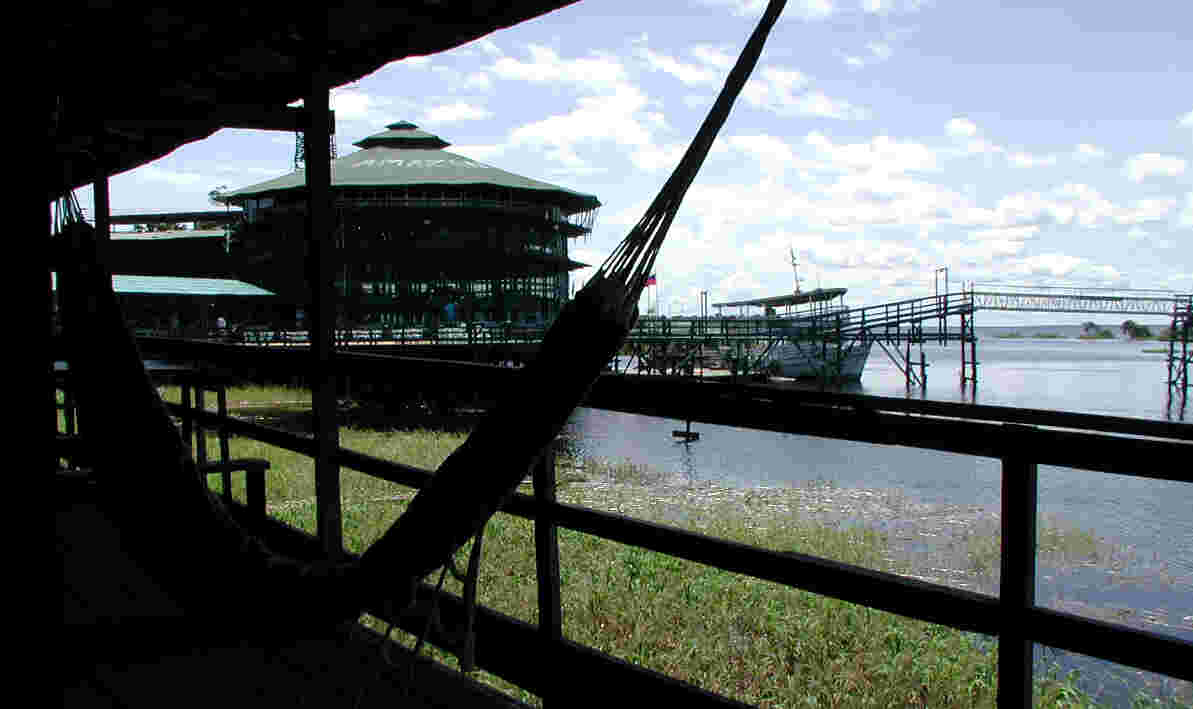 Lunch (tasty, but now the selections seemed to be falling into a somewhat familiar pattern) was served in the dining room, which was the third floor of the main building. Afterward we had some free time and Jim made a beeline for our room, his bed, and a nap. I lingered on the wooden walkways to take pictures of the monkeys which were running about, jumping, and tussling with each other. One spied the strap on my video camera and decided he'd take a swing. I anticipated his move and swooped the strap out of the way, but not before the monkey had crawled all over me. It was great. The monkeys use the end of their tales to hold onto things, and its "grip" is quite strong. When the monkey activity subsided, I decided a nap was a good idea, too, and was lying on my bed in no time. When we awoke we were swimming in a pool of water -- sweat, actually. The room had no air conditioning and we left the door to the "porch" open to get a little breath of air, but that allowed the sun to stream in. We decided to seek a room upgrade to something -- anything -- with air conditioning . . . if there was such a thing. The afternoon activity, a boat trip, began at 3:30. There were two tourists, very pleasant people from London (Sue and Gerry Cooper), in addition to Jim and me -- plus three staff people: our guide (Alan), the motorman, and a young kid (Jonas, actually a college graduate) who was apprenticing for the job of guide (he had a lot to learn). The trip was generally unremarkable, except for a few sights including a mighty kapoc tree (very tall, with fan-like roots; its wood is valuable for flotation purposes and will remain buoyant in the water for 40 years!) and, toward the end, a gorgeous sunset. Along the way, Alan became upset. He indicated that the noise of another boat (filled with elder hostel people) was disrespectful of the jungle and its beauty. He directed our boat off the main channel and we waited for some while until the "noisy boat" passed. Then, when it was out of sight, although still not yet out of hearing range, our boat glided back in the main channel. The outboard engine was started, and with a high-decibel roar we continued on our way. So much for respect for a quiet jungle! After a short time, we emerged from the igapo onto the Negro River proper and headed back to the Towers. It was about 5:30 or a little after. The sky was mixed clouds, and the sun was sinking into them. Pale colors and hues darkened and intensified into rich yellows, reds, and golds. We paused briefly as the sun slipped from sight, took some pictures, then the boat headed for the dock. It was a grand sunset. There was time before dinner to inquire about an air-conditioned room. When we found one was available, we leaped at the chance, in spite of the extra cost ($25 U.S. per night!). We got our bags from room #4104 and moved them to room #6113. Blessed air conditioning! Both the temperature and humidity were lower. We could look forward to a good night's sleep. Moreover, the room was significantly bigger! It was still possible, though, to look through openings in the floor boards and see river water some ten feet or so below. After dinner we again met at the dock, this time for an evening boat ride and a search for caiman. A staff member stood at the bow and scanned the water with a bright searchlight -- left, front, right -- looking for the telltale reflections of caiman eyes. We pursued several sightings by easing the boat toward the reflections. In one case after another the caiman made rapid getaways, but our search continued. It was important not to speak as the sound frightened the reptiles. Surprisingly, the loud roar of the engine apparently didn't. At one point our boat glided just a few inches from a baby caiman maybe ten inches long. The Ariau staff people were after bigger targets. Then we saw a good-sized specimen, maybe three feet long, maybe more. Before we knew what was happening, a staff member lunged for the caiman, jumping right into the water! And he got him. No, actually, he got her, and handed the catch to Alan, who held it tightly with one hand around the neck and the other around the tail. Much to Sue's dismay (she did not like close caiman confrontations), Alan brought the creature to the middle of the boat to give us a brief lecture. It was indeed quite thrilling when the reptile decided to escape from Alan's grasp. With a frantic twist of its body, it made a lunge straight forward -- which happened to be directly toward me (I was sitting with my legs straddling the seat on which the caiman was held captive) -- but Alan held tight, so the escape attempt was unsuccessful. At one point Alan asked if I wanted to hold the critter. Sure, why not, so he let me do so. Gerry also took a turn. I thoroughly enjoyed my "hands on" experience. After some additional instruction in "caiman-ology," and several photos (neither Jim nor I had cameras, so the Coopers were the only ones to record the conquest), we bid farewell to our reptilian friend, he (oops -- she) was lowered into the water, and when released, darted away from the boat with much haste. It was a very pleasant encounter -- at least for the tourists! Since we had lathered up with sun screen before the afternoon boat ride, Jim and I wanted to shower before bed. While the shower water temperature wasn't cold, neither was it hot, though a little more on the cool side than warm side. Nevertheless, it was refreshing and a treat to get off all the sun screen stuff. After writing in my journal, it was after 11 o'clock before I got to bed, then only moments before I got to sleep.  Tuesday, April 24, 2001. I woke up about 6:30 and decided to arise, even though our wake-up call was to be at 7:00. After breakfast we met at the dock in anticipation of our scheduled walk in the jungle. Heavy clouds were building along the horizon, so Jim and I took our ponchos with us. Surprisingly, the jungle walk started with a boat ride, a long boat ride of maybe 30 minutes or more. We retraced yesterday afternoon's route then went even further before pulling up on shore in front of a native's home . . . and adjacent gift shop (just a few trinkets spread out on some benches, but with a roof overhead). In the jungle, we very quickly disproved the hypothesis that mosquitoes stay away from areas adjacent to the Negro River and its low PH water. Mosquitoes were everywhere . . . and they appeared starved for human blood. This was not a happy development for Sue, for she was not taking malaria tablets. Not to worry, Alan assured us all. Mosquitoes in and around the Towers don't carry malaria, he asserted. How wonderful, we thought . . . if true. Moreover, said Alan, reassuringly, there is no yellow fever here, either. (So why did I get all those expensive vaccinations and pills?) I think we were all glad we had followed Alan's recommendation about wearing long pants. Mosquitoes all about the face and arms were bad enough; around the legs, too, would have doubled the displeasure. Although a number of jungle characteristics had been described to us on our jungle walk three or four days prior, Alan's descriptions and demonstrations were more interesting and personal. He had us sniff numerous leaves and bark shavings, he showed us a little grub that grows inside one of the Brazilian nuts (then Jonas ate it!), he let us climb up a heavy, twisted vine, he showed us the tree the sap of which is used to make milk of magnesia, and he let us taste a number of other products of the jungle. Although quite hot -- all our shirts were drenched -- the two-hour-plus walk was both informative and pleasurable. 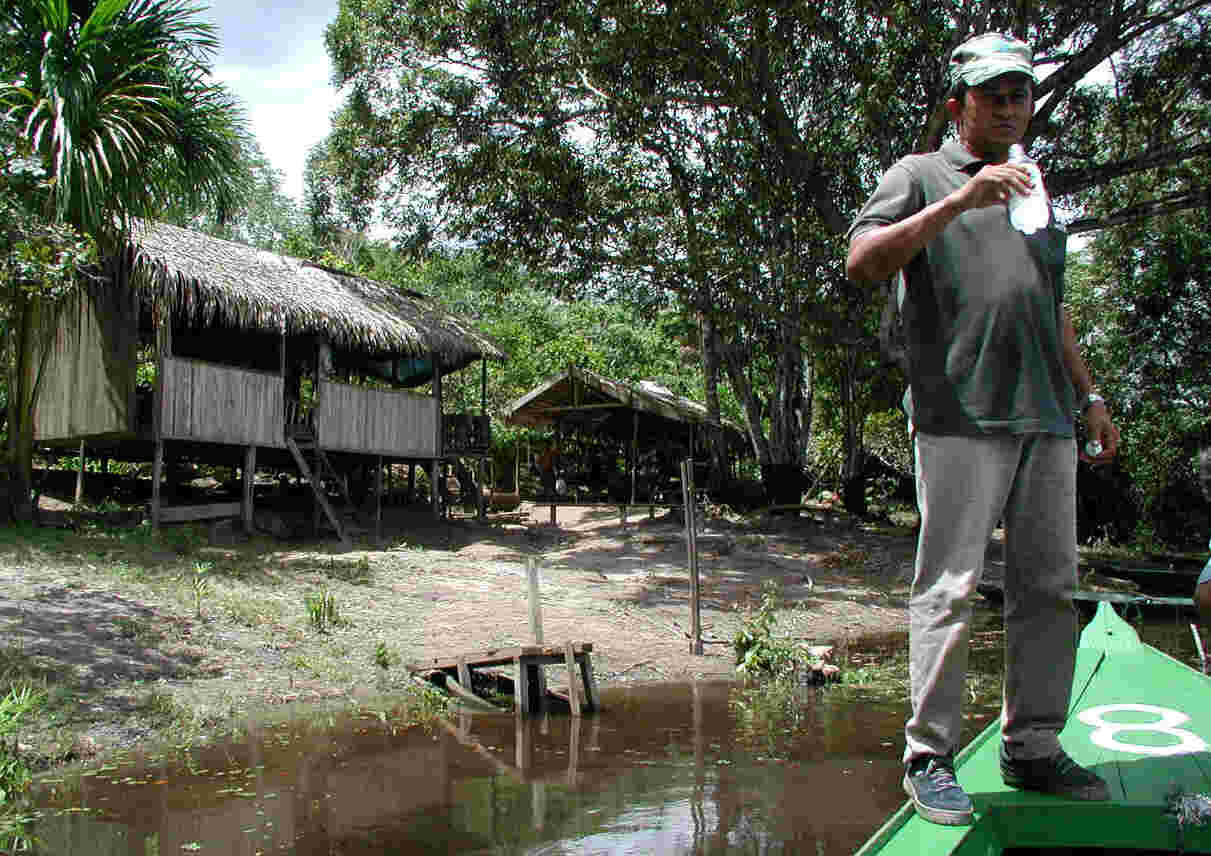 At one point Alan asked, "Where are our boats?" We each pointed in a different direction, but none of us pointed in the right direction. We got back to the Towers about 12:30, ate lunch, and then had some free time. Jim chose shut-eye; I decided to work on my journal. Our next "activity" was scheduled to be piranha fishing, with a 3:30 departure from the dock. About 3:00 it poured. The skies were black, there was lightning and thunder, and the rain was in torrents. At 3:30, the rain had stopped but black clouds could be seen off in the distance in nearly every direction. Alan said it would be unlikely, after such a heavy rain, for anyone to catch anything in the way of fish in the stirred up waters. He also said we could expect more downpours at any time during the fishing expedition. That was enough for Jungle Jim. He decided to opt out of the fishing activity. I had my trusty poncho with me, I gave my shoes to Jim to take back to the room (so they wouldn't get soaked), and I left my digital camera with him, too. I took my video camera, however, donned the poncho, and braced for the worst. Happily, Sue and Gerry came along, too. As we started out, the clouds looked ominous. We putt-putted along for a relatively short time, then turned into the igapo, stopped the boat, tied it to a tree, and broke out the fishing poles. Well, fishing "sticks" would be more accurate. Each was just that, but a good, strong stick, maybe five feet long, with about six feet of fishing line attached to one end, and a piece of wire and a hook attached to the line (the piranha's sharp teeth would bite right through a normal plastic line). Tiny bits of heart or liver were used as bait and in no time five lines were in the water: Gerry's, Alan's, two other Tower staff members,' and mine. Sue chose to watch. Almost immediately the motorman caught a piranha. The routine was this: when you caught a fish, you basked in the glory for a couple of minutes, then you let the fish go. Only a few minutes later the motorman caught another piranha (or maybe the one just released). Then shortly thereafter, Jonas made a catch. He said it was the first fish -- of any kind -- he had ever caught! He was delighted. Then came the lull. 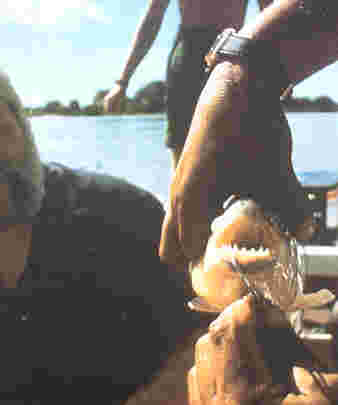 Piranha, similar in size to the one I caught. Photo from a 1996/1997 Latour tour book. There were occasional nibbles on the lines, lots of nibbles in fact, but nothing that could be hooked and pulled up. Sue decided to join the exercise after all. Then, after maybe 45 minutes there was a tug on a line, a yank up on the pole, and a pretty good-sized piranha appeared. Not only that, it appeared on my line! Alan grabbed onto the thing so I could admire my handiwork . . . and take a video, of course. At one point, it wiggled free and flapped about on the bottom of the boat. With strong piranha teeth snapping dangerously close to my bare feet, I leaped up on one of the seats of the boat until the fish could be recaptured and held tight. Alan pried open the fish's mouth so we could see the menacing teeth. The piranha didn't like the treatment it was receiving and made an eerie wailing sound. It was weird. I hope I caught it on video tape. After the piranha was returned to the water, the group fished on, but with absolutely no luck -- except good luck for the fish. When hope was nearly exhausted, we stashed our poles and headed back toward the Towers. But there was a detour. Alan directed the boat out into the Negro River proper where we putt-putted along for a while, then back through the igapo, then we reversed our direction, turned back on into another channel, and finally made an abrupt U-turn. "Sloth," he announced proudly, and sure enough, way up in the top of a tree was a dark image in the shape of the animal, hanging there motionless. Some sounds by staff members apparently got the sloth's attention and he (she?) began to slowly shift positions in the tree's small branches, maybe 50 feet above the ground. We watched and took pictures for several minutes before continuing back to the Towers. It was after six o'clock when we docked. Jim was waiting for us at the dock and we described our adventures, all of which transpired without a drop of rain to interfere. Jim and I were then treated to a drink at the bar, thanks to the Coopers. We enjoyed lively and interesting conversation there, then at dinner, then for some time after dinner. However, the prospect of a 5 o'clock wake-up call the next morning sent us all to our rooms before too much of the evening had elapsed.  Wednesday, April 25, 2001. Jim was awake before our 5 o'clock wake-up knock on the door, which occurred about 5:15. We were at the dock at 5:30 on the dot. The Coopers were there minutes later, but Alan was missing. After five or ten minutes he appeared and announced our boat was stuck in a floating island of grass a hundred yards or so from the dock. There are floating islands of grass dotted here and there all over the place. They appear to be genuine miniature solid islands, but are merely a layer of grass and other plant debris which have collected together and then grown into an intertwined "grass" blanket. We walked from the main dock over a number of wooden walkways and through several structures to another dock, where we joined another group for our sunrise tour. The sunrise was well underway when we passed "our" boat still snared in a thick tangle of grass. 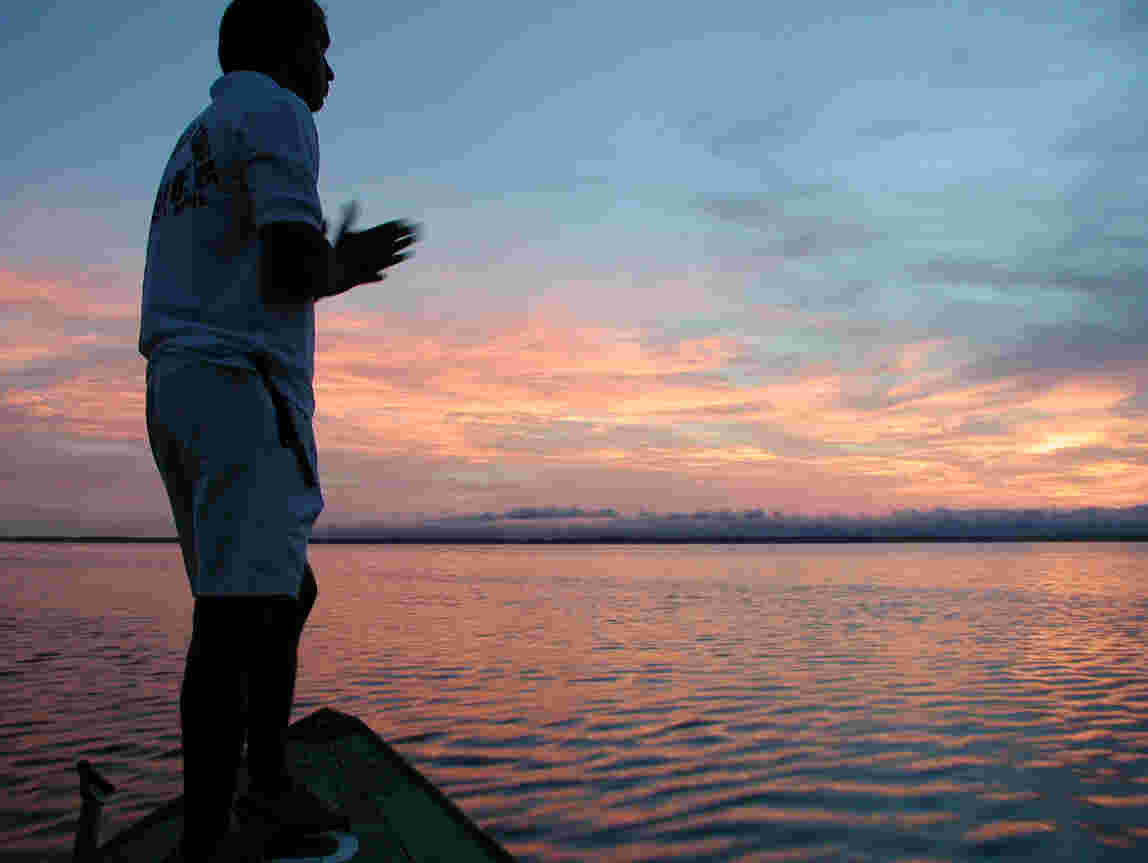 We then proceeded to the middle of the Negro River, where we stopped, the boat engine was silenced, and we were able to listen to the early-morning sounds. We heard all sorts of bird calls emanating from the forest, and also the sharp, penetrating call of howler monkeys. As rain clouds moved our way, Alan took the opportunity to present to each of us a flyer about Ariau Towers (showing some good photos of the area) and an official "Ariau Amazon Towers Certificate." The certificates said we each had "received instructions and basic training on jungle survival techniques that include: jungle trekking, sailing on the Negro River, canoeing on the Ariau River, Ubim Lake and other creeks." I looked for my piranha "biggest fish caught" fishing award, but none was provided. Bummer. As the clouds darkened and became more menacing, we headed back to the Towers, arriving there about 6:30. When the dining room opened at 7:00 we joined the Coopers for our last meal together. We bid them a fond farewell as they boarded the 8 o'clock boat to return to Manaus. We missed their company. Immediately after the Coopers departed, we boarded our own boat for an hour's ride to Acajatuba, an Indian community of some 41 families. As we were watching the sights along the way, I thought I felt a slight sensation around my right ankle. I ignored it a couple of times, but then decided to roll down my sock and see if a leaf or few blades of grass were causing irritation. What I found were dozens of little black specks, each smaller than the head of a pin. (Probably three or four could fit on a pin's head.) Alan was immediately summoned to explain the phenomenon. "They're ants," he said, "carrapato ants." He went on to tell us they live in the jungle and wait for unsuspecting potential "hosts" to pass by, and then they catch a ride. They crawl on the host's skin until they find a spot to their liking and then the fun begins. They suck the blood. Alan said they suck blood until their tiny little bodies are stuffed and then the ants fall off. "My" ants must have been of a slow-sucking variety, because they were still at it some 24 hours after hitching a ride (during our walk in the jungle). They were also rather resilient. They had hung on through two changes of clothes and even a shower! The little buggers were very easy to pick off, however. An easy scratch with a fingernail dislodged them, and naturally I wasted no time pressing this procedure into service. When my ankle was ant free, I took off my shoe and found some more. Then I noticed some ants around my left ankle and I picked them off, too. Then, close examination revealed some ants had migrated further up my legs. Homesteads had been established around my calves, knees, and some had even staked out property around my thighs. As my search intensified, I found a couple of "explorer" ants nearly as high as my crotch. I dreaded to think there might be even more adventuresome ants who were foraging even further north! I probably plucked off more than 100 of these little blood suckers. Jim took inventory, too, but only found a few (half dozen?) clinging to him. The community at Acajatuba offered a plethora of photo opportunities, so I was like a kid in a candy shop. The Catholic church (Our Mother of God of Perpetual Help), school house, family houses (shacks, really), store, and other buildings were all interesting, as were the children, and even the dogs and chickens. We spent about an hour and a half taking in the sights . . . both visually and via camera. We saw another "factory" where yellow flour is processed, but this time were told its name was "majork." Actually, we learned there are two kinds of yellow flour in Brazil, presumably ksava and majork. On the trip back to the Towers I did a little more ant searching, and found a few stragglers. Alan had a Swiss-Army-like knife with more devices and attachments than the Swiss ever dreamed of, and one of them was a tiny magnifying glass. It magnified the carrapato ants more than I really wanted. They were green-black in color with shiny bodies and don't look anything like "traditional" ants. They had two feet in the back, two at the side, and two long feelers or legs in front. To me they looked a whole lot more like beetles than ants. So interesting were the "ants," the two other passengers (a French husband and wife who had arrived at the Towers the day before) and Jim had to take a look. I felt like some sort of specimen at a natural history museum. Back at the Towers we had about a half hour before lunch began (at noon), so we did some exploring. We climbed to the top of an observation tower, inspected some caged parrots, saw a little snake (green, about two feet long) squirming along about a yard from us on the roof of one of the buildings, had a comical monkey encounter, and walked along some of the many crazy cat walks that cris-crossed back and forth among the various Towers structures. It was probably after 12:30 when we began lunch. 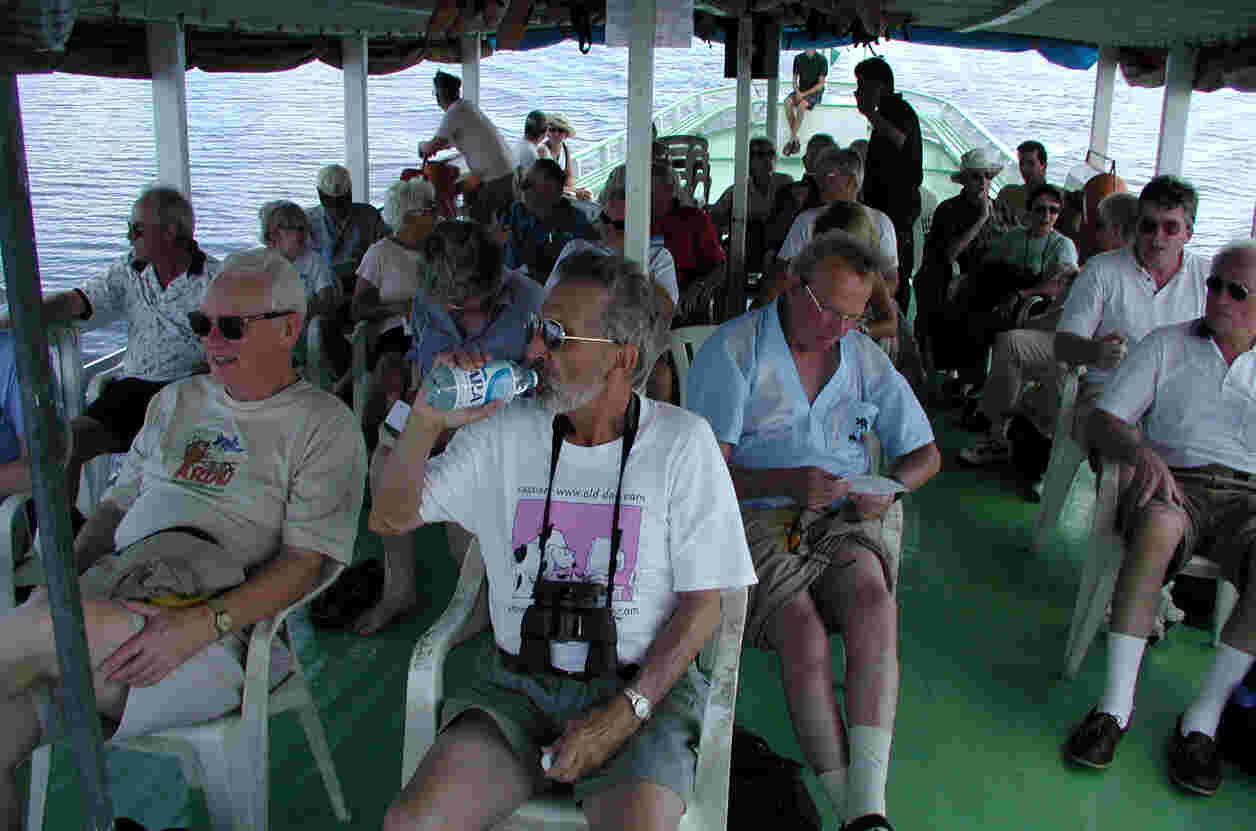 And it was about 1:15 when we finished, giving us just enough time to cram all our belongings into our bags, check out of our room, and meet the boat at the dock for our return to Manaus. The boat trip back was uneventful. We watched as heavy showers moved our way from the north, but they petered out as we moved to the east of their path. Back at the Tropical, we checked in and were assigned room #2109, even closer to the lobby than our prior room. We then headed for the gift shops immediately adjacent to the hotel and got some post cards, a map of the Amazon, and a couple of souvenir masks to give as gifts. Then, as it was nearly 6 p.m., we headed to the shore line to catch a photo of the sunset. No luck. The sun dove into a thick bank of clouds and its colors never materialized. We did a little sifting, sorting, and organizing of luggage items, then proceeded to the dining room for supper: a club sandwich, OJ (two glasses), French fries, and for dessert: a sliver of rich chocolate cake and a coconut tart-like delicacy. Yum! During the meal Jim and I commented that while it was interesting to hear all the Brazilian words of the new foods we had encountered, the names of trees, the names of lakes and communities, and the names of local customs, activities, and other aspects of life in Brazil, it was rather futile. There were too many to deal with. Jim observed, "Of all the new words we've been told, there are only two I can remember: 'igapo' and . . . 'something-something-tuba'." For some reason that really twanged my funny bone, and I was laughing nearly uncontrollably. After deciding on a packing strategy (we would each check both of our "major" bags, although we had checked only one each on the flight to Manaus), it was shower time. Jim went first, so I thought I'd undergo yet another carrapato ant search, this time with nowhere for the ants to hide. I discovered six or eight of the freeloaders, maybe ten, one of which was grazing just about at the crotch line. Following his shower, Jim agreed, though I'm sure reluctantly (only a brother would accept such duty), to perform the examination of those remote areas where my visual search capabilities were impossible. Happily, he discovered no lingering interlopers. Nevertheless, my shower included a soaping and scrubbing the likes of which I had not unleashed on myself ever before. By the time I got in bed, Jim was already asleep. It was 9:30.  Thursday, April 26, 2001. My little travel alarm beeped at us at 1:30 a.m. We dressed, grabbed our bags, checked out, and were waiting in the lobby at 1:57 when our driver appeared. It was only a 10 to 12 minute trip to the airport . . . at least at that time of day. I was surprised to see a soccer game with a dozen or more players (and some spectators) in full swing. There were a couple other people "on the street" at that hour, but very few vehicles. Unsurprisingly, lines and waiting were part of the process to get through customs. We started boarding about 3:45, left the ground about 4:10, and landed in Belem a little less than two hours later. We remained in the plane (as instructed) and took off after an hour or so for our 2836-mile flight to Miami. The cold I mentioned April 22nd had been running its usual course (sore throat, runny nose, cough), but was (thanks, I'm sure to Ester C) very much in the background of things. The symptoms were but a mild irritation (sometimes hardly even noticeable) instead of the usual debilitating manifestations. However, I suspect the cold had "thickened" my "juices" such that when we descended to land in Miami, my Eustachian tubes didn't clear properly. One ear felt like it was still at about 30,000 feet pressure, the other maybe 10,000 feet. Jim had the same problem -- but worse! We were both chewing gum, yawning, stretching our jaws, and twisting our heads, but it took a while before my tubes unclogged. Jim had the problem all the way to Grand Rapids and didn't get relief until the following day! 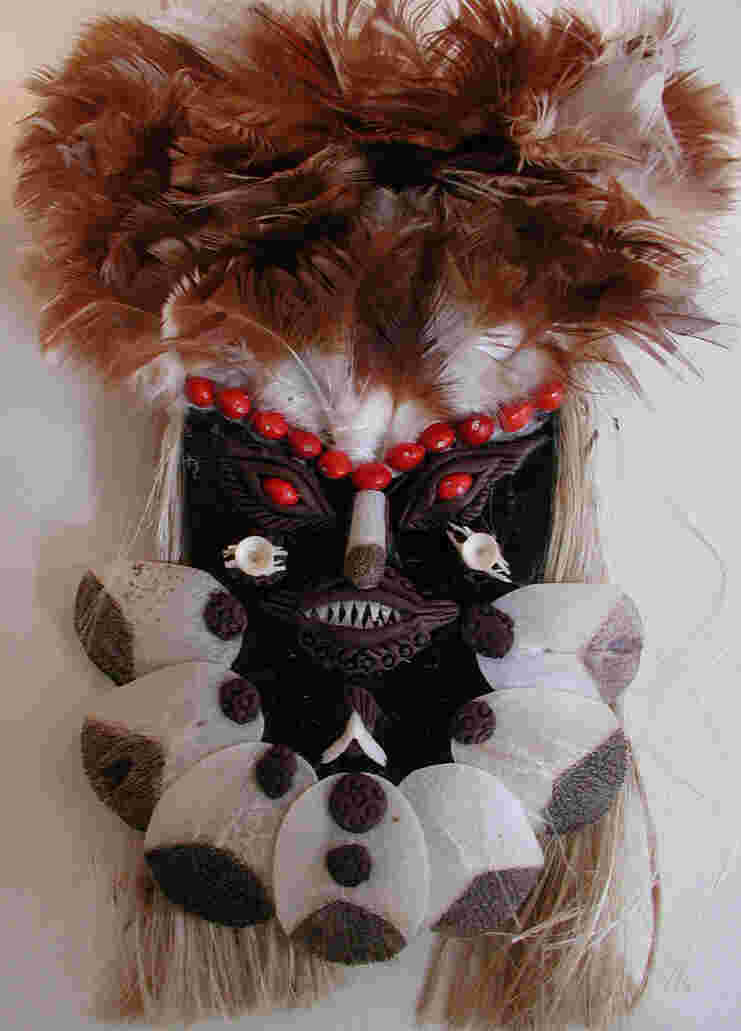 I just couldn't honestly check the box on my Customs Declaration form stating I was not carrying with me any items made from or containing plant or animal products, when I was. The mask I had bought less than 20 hours before was made of nothing else! They contained fish scales from the pirarucu fish, molongo ou temto seeds, snake bones, fish bones, teeth from the piranha, jute, chicken feathers, and lauro wood! After retrieving my bags, I encountered maybe a dozen doors, most of which were labeled "Nothing to declare." A sign advised me to go through the door with the big red light over it if I was carrying anything containing plant or animal products. I sighed and entered. Inside I found a big room with lots of machines that looked somewhat like airport security scanners, except they were considerably larger. As directed, I placed all my "carryables," one bag at a time, on the conveyer belt which drew them into the machine's "mouth." In a moment the machine "spit" them out the other side. Now comes the interrogation, I thought to myself. Instead, the customs inspector looked at me and almost imperceptible nodded her head. Well, I thought, if this means I can go, I'm not going to debate the matter, so I picked up all my bags and confidently walked toward the exit. I really expected to be called back, stopped, or at least spoken to, but I wasn't. I never even turned in my customs form and I slipped right out the door. It took me about as much time as it took Jim, who took the "Nothing-to-declare" route. And the whole customs procedure was probably the fastest I've ever experienced. By then it was probably 1:30 p.m. or later and Jim had to check in for his 3:10 flight to Chicago. After doing so, he accompanied me to the car, where I deposited my bags, then we made our way to the gate to await his flight's departure. We said our good byes, Jim got aboard, 3:10 came and went, but the plane stayed put. It wasn't until some 35 minutes later that it finally was pushed away from the loading platform, revved its engines, and headed for the runway. I returned to the car and drove to the exit. The parking fee was a shock! It nearly emptied my wallet. I asked if there was anywhere I could have parked at the Miami Airport for a lower rate. Nope. As I exited the airport I was still focused on the fee and I didn't concentrate on the signs positioned overhead. The next thing I knew I was headed for I95 -- just where I didn't want to go -- and, I was sure, traffic congestion. I was right; I95 north was at a crawl. But maybe it was a good thing because it kept my attention on the road. I thought I might be a little sleepy on the drive home . . . but wasn't! I was home in about an hour and a half. Jim said he'd call when he got home in Grand Rapids. His plane was due to land at 8:51 p.m. However, his late departure from Miami raised concerns he might have missed his connection in Chicago. I received no call. Friday, April 27, 2001. I learned Jim didn't make it home until almost 11 o'clock due to late flights, rain, and luggage delays. It's not an atypical ending for a trip out of the country. Apparently his luggage was exposed to the elements, too, as his belongings were wet when he unpacked. But such minor irritations are inevitable (my moccasins, for example, never did dry and had to be tossed because of mildew), and a very small price to pay for a trip as rewarding as our Amazon adventure. It was exciting, sometimes thrilling, informative, gratifying, restful (though at brief times stressful), and thoroughly satisfying. From my perspective and I think Jim's, too, it was an absolutely stupendous trip! Saturday, April 28, 2001. Just before going to bed a little after midnight, I noticed a spot on the back of my left upper arm. You guessed it. It was one last, final (?) carrapato ant that had hung on to me since Tuesday! I got out my eight-times-magnification loupe and looked at it. A little the worse for wear (who knows when it died), its color had faded and most of its legs were gone, but you've got to give the dog-gone thing an A+ for tenacity. So much for the they-suck-your-blood-'til-they're-full-then-drop-off theory! 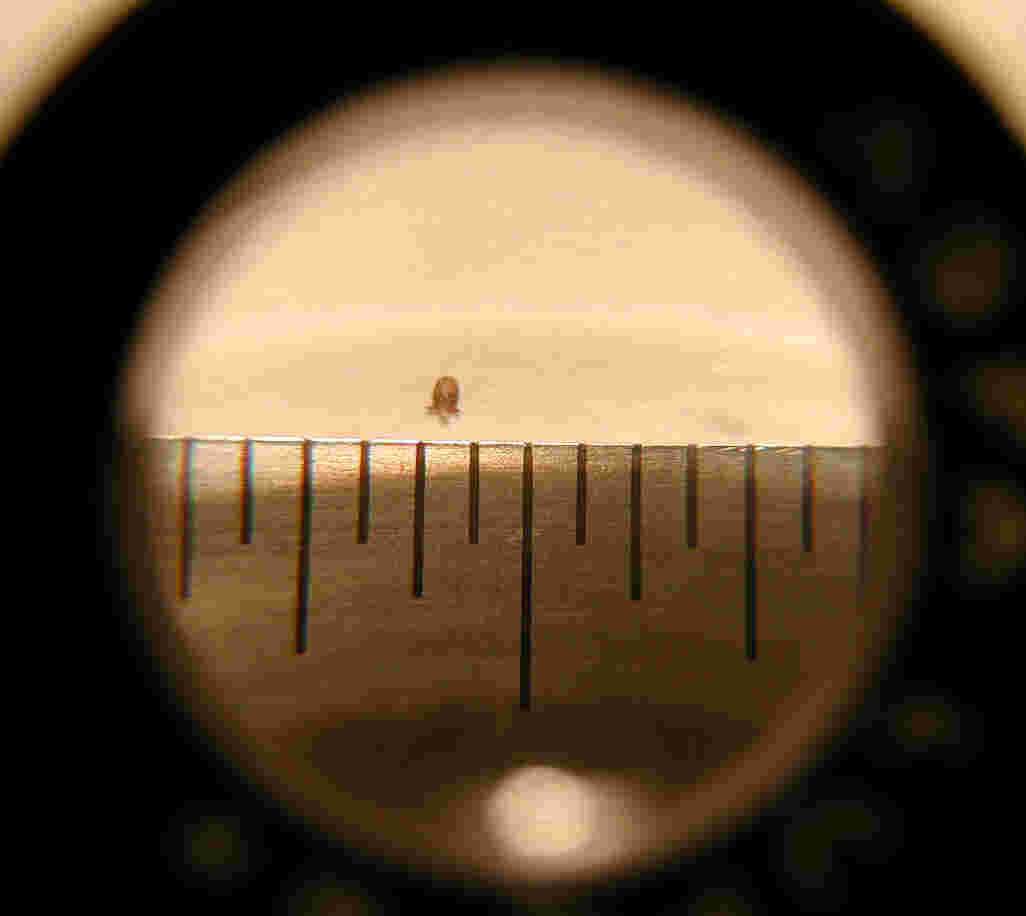 1/32-inch apart.) I found another little creature (?) stuck under my left arm. It was several times as big as the "ant" and who knows what it really was. Time, friction, and several showers had turned the thing into an undistinguishable jumble of parts. Sunday, April 29, 2001. OK, so I found one more. On my right elbow. Big deal. Actually, three days after the trip ended I was more concerned with continued mosquito bite itchiness than another dead "bug" hanging on me. I got out some maximum strength Hydrocortisone cream and treated several dozen bites and spots, mostly on my arms. This turned out to be a trip that just wouldn't stop "giving!" Friday, May 4, 2001. Contrary to my expectations, the itchiness continued beyond April 29th into the following week. The two dozen or so mosquito bites on my arms gradually disappeared, along with their discomfort, by about May 2nd, but some bites on my legs then flared up. On May 4th I noticed what seemed to be three different bite manifestations: three or four were red blotches about 3/4 inch in diameter, another three or four small (maybe 3/8-inch-diameter) red bumps, and about 50-60 tiny little bumps, mostly around my right ankle, the site of the original "ant" invasion. I tried rubbing alcohol, Hydrocortisone, Polysporin, zinc oxide, Dermarest Plus, Calamine lotion, and Campho-phenique. I thought the Campho-phenique and Calamine lotion were best at moderating the itchiness. I concluded that when Alan said carrapato "ant" he really meant "tick", but if so, what were the habits and inclinations of this pest? I couldn't find "carrapato" in my dictionary or encyclopedia. The idea that each tiny little bump on my ankle might be a nest of 50 to 100 (1000?) growing and maturing tick eggs, which would some day hatch a whole new generation of ticks, was not comforting. It's the stuff nightmares are made of. The weather this day was a little windy and a frond from a palm tree in my back yard was blowing about, banging and scraping my roof. It was making quite a racket, so I went outside to see what could be done. Almost immediately I noticed sensations around my ankles. Those bites are acting up again, I thought, but when I took a look, I saw both feet were covered with black ants scurrying about and biting away like crazy. It wasn't a hallucination; I was standing on an ant hill! One of the biggest disappointments of the trip came last night. I settled down in the comfortable chair in front of my TV to watch the video I had made of our adventure. From beginning to end the images were displayed on the screen in alternating bands of color and black and white. The video was ruined. Was the camera or tape to blame? No; I ran a test -- same camera, same tape -- and the images were perfect. Was it the scanning equipment used by Varig? No, I don't think so. I had sent my camera through dozens of scanners with no ill effects. Was it the "Something-to-declare" machine during Miami customs? Probably; As far as I could determine there was no other explanation. It appeared a damaged tape was my "reward" for honesty. Saturday, May 5, 2001. At a Sound Advice electronics store I happened to find a salesman with extensive video experience. He ran my tape through a unit he thought might clear up the interference. It didn't. I told him my story. "Gamma radiation," he said. The U.S. Customs machine had bombarded all of my baggage with gamma rays, sterilizing everything, but in the process ruining my precious video tape. "You'd think they'd warn you about cameras," I said naively. The salesman proceeded to tell me he had lived in Brazil for several years on a cocoa plantation and had nothing but bad experiences with the customs people. In one instance they spilled a collection of his gems, breaking some, costing him thousands of dollars in damage. "They don't care," he said, with a voice of experience. I joked that maybe I should have gone through the radiation machine myself to avoid my bug-bite problems. I showed him my ankle. "Oh, that's the ______," he exclaimed. He gave a name (which I now don't recall); maybe it was "carrapato". They're very tiny insects, he said, sort of like no-see-'ems here in the U.S., and they frequently produce multitudinous bites around the ankles. "Don't scratch them," he cautioned. (Too late!) The ants in Brazil, he continued, are incredible. Once or twice a year when they swarm, they're everywhere -- on the floors, walls, ceilings. "You couldn't get out of bed," he explained, "and then in a few hours they're all gone." He also told of fearsome experiences he had had with snakes and other jungle beasts. "But the vampire bats," he cautioned, "they're the worst!" So the good news: my bites were just par for the course. The bad news: the tape was damaged beyond repair. "Live and learn," he advised, philosophically, as I left the store. Thursday, May 10, 2001. The ugliness of my bites, bumps, and blotches gradually diminished, and as it did, I became more and more convinced I wasn't going to be "mother" to a million baby ticks. The redness and itchiness started to subside early in the week, although they were still apparent as the week drew to a close. On Monday I bought a Video Copy Master device ("stabilizes video signals for crisp, bright copies") in a last-ditch effort to correct the video problem. I used the unit to make a narrated version of the video, but picture-quality improvement, if there was any, wasn't noticeable. Jim reported that he continued to deal with slightly-clogged ears, but the situation was improving. He also confided that my bug battle got him concerned enough to take another inventory of his own possible bug sites. He said he scratched off a couple . . . only to find they were moles! I noticed a platoon of tiny black ants had invaded my kitchen! A reconnaissance party, I surmised, preparing for a massive invasion. I sprayed the little devils into extinction, but I think it's clear: ants are taking over the world! |